- JST Home
- /
- Strategic Basic Research Programs
- /
 ACT-X
ACT-X- /
- Research Director/
- Frontier of mathematics and information science/
- [Math and Info] Year Started : 2019
[Math and Info] Year Started : 2019
Ayumi Igarashi
How to cut a discrete cake fairly.
Grant No.:JPMJAX1901
Researcher
Ayumi Igarashi
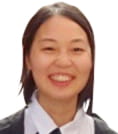
Assistant Professor
Principles of Informatics Research Division
National Institute of Informatics
Principles of Informatics Research Division
National Institute of Informatics
Outline
What is a fair way to divide offices, tasks, assets and so on? This project is concerned with the problem of fairly allocating indivisible items. While the classical literature on divisible resource guarantees the existence of a fair and efficient allocation, it is impossible to achieve the golden companion with indivisibilities. The aim of this project is to properly define desiderata that should be satisfied in this setting and design an algorithm that outputs a solution satisfying such properties. Our particular aim is to identify the least restrictive domains that enable us to achieve approximate fairness and efficiency, in terms of both existence and complexity guarantees.
Yuichi Ike
Data analysis via new geometric approach
Grant No.:JPMJAX1903
Researcher
Yuichi Ike
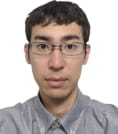
Assistant Professor
Graduate School of Information Science and Technology
The University of Tokyo
Outline
The current TDA has problems that it cannot deal with multiple persistence parameters sufficiently, nor get information on the curvature of a point cloud. We tackle these problems and aim to create a new framework of geometric data analysis, which improves TDA and generative models. Our two approaches are the following: 1. We define a new index that captures information on multiple parameters, using sheaf theory. 2. We construct a method for analyzing point clouds based on magnitude homology.
Takuya Ikeda
Dynamical sparse modeling for design of time-varying large-scale networked systems
Grant No.:JPMJAX1902
Researcher
Takuya Ikeda
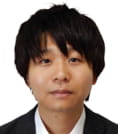
Lecturer
Faculty of Environmental Engineering
The University of Kitakyushu
Outline
This study aims to characterize the network topology that enables us to realize energy saving control of large-scale networked systems. For this purpose, this study newly proposes a scientific technique called “Dynamical Sparse Modeling”, which expands the existing sparse modeling, a successful technique in the field of data science, to the design of dynamical control systems. By explicitly taking dynamical properties of systems into account, we can find not only where but also when sub-systems should be connected for achieving high control performance. The proposed approach will be useful for design of multi-agent systems consisting of unmanned vehicles and control of people and traffic flow.
Masaru Isonuma
Unsupervised summary generation based on hierarchical structure
Grant No.:JPMJAX1904
Researcher
Masaru Isonuma

Project Assistant Professor
Graduate School of Engineering
The University of Tokyo
Outline
The need for automatic summary generation is widely increasing because of the vast amounts of textual data that continue to grow. However, previous works lack in practicability, because they need a large number of reference summaries. This project focuses on unsupervised summary generation based on hierarchical structure such as discourse trees or hierarchical topic structure. This work is the first attempt of unsupervised summary generation specifically for single document, and contributes to practical applications of automatic summarization.
Nakamasa Inoue
Muti-modal Pre-training Towards the Grand Unification of Data Learning Frameworks
Grant No.:JPMJAX1905
Researcher
Nakamasa Inoue
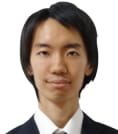
Associate Professor
School of Computing
Tokyo Institute of Technology
Outline
This project aims to unify image recognition and audio recognition frameworks. Its goal is to make a neural network that can be fine-tuned to four diffirent tyeps of tasks: audio classification; speaker recognition; object recognition; and person identification.
Tomoki Uda
Mathematical Theory of Reeb Order toward Data Analysis
Grant No.:JPMJAX1906
Researcher
Tomoki Uda
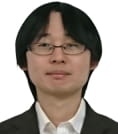
Assistance Professor
Advanced Institute for Materials Research
Tohoku University
Outline
Reeb order is new formulation that combines both 0th and 1st persistent homology to construct a Reeb graph. The Reeb order formulation yields various properties that are not found in preceding methods and hence has much potential to develop its theory and application. This research attempts to establish its stability, convergence, categorical generalization, computable metrics, computational complexity, and so forth. All of these tasks are important for realizing further applications of the Reeb order method as one of topological data analysis tools.
Tomoyuki Kajiwara
Paraphrase Generation for Improving the Performance of Various NLP Applications
Grant No.:JPMJAX1907
Researcher
Tomoyuki Kajiwara

Assistant Professor
Graduate School of Science and Engineering
Ehime University
Outline
Improving machine translation performance in the daily conversation domain is an important task in Japan, where the olympic and expo will be held. However, it is difficult to make a large-scale bilingual corpus in the daily conversation domain for every language pair. Although large-scale bilingual corpora in different domains may be available, domain differences generally cause significant degradation in translation performance. In this study, the input sentences are paraphrased into sentences that are easy to translate for a given machine translation system to obtain high-quality translation regardless of the domain.
Haruka Kasuga
Social Robots with Positive/Negative Voice Conditions in Owner-Companion Relationships
Grant No.:JPMJAX1908
Researcher
Haruka Kasuga

Graduate Student
Graduate School of Information Science and Technology
Hokkaido University
Outline
Until now, social robots targeting humans have been evaluated for their impact on triad relationships. However, no research has been conducted on social robots in a triad relationship that includes owners, robots, and typical companion animals, such as dogs or cats. Therefore, focusing on the fact that human language and animal language are often used in daily communication between owners and companion animals, we elucidate the kind of triad relationship that will be built depending on the voice of social robots.
Marie Katsurai
Using Dynamic Knowledge Graphs for Finding Relatedness Among Different Research Fields
Grant No.:JPMJAX1909
Researcher
Marie Katsurai

Associate Professor
Faculty of Science and Engineering
Doshisha University
Outline
Interdisciplinary collaboration among researchers with different areas of expertise can po- tentially produce innovative ideas, solutions, and technologies beyond existing frameworks. However, due to a lack of understanding of other fields and communication opportunities across fields, it is generally difficult for researchers to find related techniques and applications outside their own areas of expertise. This research project studies a novel approach that uses dynamic knowledge graphs for recommending cross-discipline collaboration topics.
Ryo Karakida
Theory of large-scale neural networks based on the hidden geometry of learning and its application to reliability evaluation
Grant No.:JPMJAX190A
Researcher
Ryo Karakida

Senior Researcher
Artificial Intelligence Research Center
National Institute of Advanced Industrial Science and Technology
Outline
This research explores the mathematical structure of neural networks which universally holds in various model architectures and learning algorithms. Taking a large-scale limit of the network, one can use statistical mechanical methods such as mean field theory and random matrix theory, and the analysis of learning based on the neural tangent kernel. Using these methods, this research aims to overcome the heuristics and arbitrariness in deep learning and to guarantee the reliability of prediction.
Naoki Kimura
Proposal of silent speech interaction by articulatory motion analysis by deep learning
Grant No.:JPMJAX190B
Researcher
Naoki Kimura
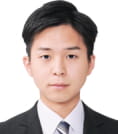
Graduate Student
Graduate School of Interdisciplinary Information Studies
The University of Tokyo
Outline
Voice user interfaces is the next generation interface, which basically anyone can use. However, since it always requires voice utterance, the available scenes and users are limited. Therefore, in this proposal, we will research silent speech that can operate VUI without speaking. At the same time, we propose a new computer interaction using silent speech.
Lin Gu
Interpret-able Deep Learning Framework that Generates Pixel-wise Labels from Human Interaction
Grant No.:JPMJAX190D
Researcher
Lin Gu

Research Scientist
Center for Advanced Intelligence Project (AIP)
RIKEN
Outline
This research would address two major challenges of deep learning: 1. Lack of properly labelled data to train deep learning algorithm. 2. Lack of transparency to interpret the outputted result. I would propose a united framework to address above two core bottlenecks by exploring the human computer interaction. Specifically, this research would propose the world’s first system to integrate human’s gaze and texture input to automatically generate pixel-level label while endowing AI the capacity to semantically explain how it makes decision.
Truong Thao Nguyen
Exploring large-scale design of distributed deep neural networks
Grant No.:JPMJAX190C
Researcher
Truong Thao Nguyen

Postdoctoral Researcher
Real World Big-Data Computation Open Innovation Laboratory
National Institute of Advanced Industrial Science and Technology
Outline
In recent years, the community puts a significant effort to speed-up the Deep Learning (DL) design process, e.g., training large Deep Neural Networks (DNNs) on High-Performance Computing systems. With the steady increase in datasets size and DNNs model, conventional data parallelism faces substantial scalability challenges includes (a) lack of memory, (b) high communication overhead, and (c) application accuracy. This research addresses those problems by integrating (1) a usage of model/hybrid parallelism approaches to bypass the memory limits, (2) an architecture-aware approximate communication design and (3) an HPC design optimized for DL traffic with high-speed lossy networks to reduce the communication overhead. Finally, we design a framework for figuring out the optimal large-scale parallelism strategies when deploying a given DNNs model.
Itsushi Sakata
Development of efficient catalyst design method by sparsity promoting dynamic mode decomposition
Grant No.:JPMJAX190E
Researcher
Itsushi Sakata
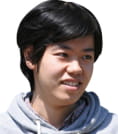
Graduate Student
Graduate School of Science
The University of Tokyo
Outline
I adress the following 3 challenges by the analysis of molecular dynamics (MD) simulation by sparsity promoting dynamic mode decomposition (SpDMD).By combining computational science and information science, we extract essential dynamics from time-series data of chemical reactions and acquire clues that contribute to the design of materials [Challenge 1] Establishment of descriptor extraction method for molecular motion by SpDMD [Challenge 2] Descriptor extraction for molecular structure change by SpDMD [Challenge 3] Catalyst searching by SpDMD
Takuya Sasatani
Developing a network of power and information based on multimode quasistatic cavity resonance for empowering small devices
Grant No.:JPMJAX190F
Researcher
Takuya Sasatani

Project Research Associate
Graduate School of Engineering
The University of Tokyo
Outline
This project aims to establish an in-vivo network that enables autonomous power and data distribution between small devices, through building an integrated sub-Watt wireless power transfer and low-power communication system. We will explore power transmission mechanisms to empower small receiver nodes which are hard to detect and achieve the coexistence of power and data transfer mechanisms. Through this project, we will establish a platform that enables small devices to work “sustainably and collectively”.
Saku Sugawara
Construction of Benchmarking Dataset for Machine Reading Comprehension using Requisite Skills for Language Understanding
Grant No.:JPMJAX190G
Researcher
Saku Sugawara

Assistant Professor
Digital Content and Media Science Research Division
National Institute of Informatics
Outline
We construct a machine reading comprehension dataset that is annotated with requisite skills for language understanding as precise evaluation metrics. To define the skills, we refer to existing tasks and technologies in natural language processing and propose new formal representations for creating questions. This dataset enables us to improve the interpretability and robustness of language understanding systems in the real world.
Anna Suzuki
Inverse analysis of “flow” and “structures” for subsurface energy resources
Grant No.:JPMJAX190H
Researcher
Anna Suzuki

Associate Professor
Institute of Fluid Science
Tohoku University
Outline
For sustainable design of subsurface energy resources, we propose inverse analysis methods to estimate complex fracture structures inside rocks using measurable field data. Reliable learning data is collected through flow experiments with 3D printed structures and numerous direct simulations. Complex rock fractures are quantified using persistent homology, and machine learning models are developed to evaluate the correlation between the quantified strctures and measurable flow data.
Kanata Suzuki
Robot-task training using Deep Neural Network with theoretical validated motion by model-based method
Grant No.:JPMJAX190I
Researcher
Kanata Suzuki

Researcher
Fujitsu Research
FUJITSU LIMITED
Outline
Recently, robotic applications are expected in various fields. So, guaranteed and good performance operation is important for robot-task in a real environment. To handle undefined motions that do not be included in the training motion, we propose a method to incorporate an optimal controller into a Recurrent Neural Network (RNN). The optimal controller designs a theoretical validated motion that returns the robot to constant posture. Then, return operation to task motion is realized by designing dynamical systems for switching task motion and return motion. In the experiment, we apply our method to robot-task learning and evaluate its success rate.
Ryokichi Tanaka
Geometric group theory and Markov chains
Grant No.:JPMJAX190J
Researcher
Ryokichi Tanaka

Associate Professor
Graduate School of Science
Kyoto University
Outline
We study geometric group theory and the problem of Markov chains arising in theoretical computer science. For example, we are interested in random walks on groups, questions on mixing times for finite states Markov chains and their applications.
Koichi Tojyo
Harmonic exponential families on homogeneous spaces and their application
Grant No.:JPMJAX190K
Researcher
Koichi Tojyo

Postdoctoral Researcher
Center for Advanced Intelligence Project
RIKEN
Outline
This research approaches theory of distributions, which is important in the field of machine learning, by using representation theory. We aim to give a framework to understand “good” exponential families such as normal distributions and gamma distributions. We proposed a method to generate exponential families on homogeneous spaces systematically by representation theory. We determine the families of distributions on important homogeneous spaces obtained by our method and apply them to homogeneous spaces with negative curvature, which has become important in the field of machine learning.
So Nakashima
A Study on Learning in Growing Population and Information Systems
Grant No.:JPMJAX190L
Researcher
So Nakashima

Graduate Student
Graduate School of Information Science and Technology
the University of Tokyo
Outline
Living organisms employ both learning at an individual level and natural selection at a population level to survive in a randomly fluctuating environment. This process is called adaptation and relates to information systems: the former motivates learning theory and the latter particle filter methods and genetic algorithms. The learning at an individual level is still not understood sufficiently in the view of both biology and information science. This research aims to reveal the learning process in a growing population based on Feynman-Kac correspondence between population dynamics and the well-developed theory of Hidden Markov Model (HMM). At the same time, this research tries to propose algorithms motivated by population dynamics.
Mikito Nanashima
Research on Difficulty of Proving Efficient Learnability
Grant No.:JPMJAX190M
Researcher
Mikito Nanashima

Graduate Student
School of Computing
Tokyo Institute of Technology
Outline
We will aim to build new fundamental theory for insisting the proof complexity of efficient learnability. More concretely, we formulate learnability as one of the properties for functional classes, and the proof as Meta-learning, which is one of property testing problems. Then, we will investigate its relationships to known concepts in computational complexity, such as polynomial hierarchy and interactive proof systems.
Tomohiro Hayase
Research of Deep Learning via Free Probability Theory
Grant No.:JPMJAX190N
Researcher
Tomohiro Hayase

Researcher
Fujitsu Research
FUJITSU LIMITED
Outline
In the 1980s, free probability theory is invented in pure mathematics. Since the theory can treat efficiently random matrices and high dimensional statistical models, it is applied to information science such as wireless communication and deep learning. Through a problem of clear understanding based on free probability theory of deep neural network, which is a high-dimensional statistical model, we will pursue new horizons that have not been seen only by the application of conventional probability statistics. In particular, we mainly aim at a theoretical analysis of deep learning based on free probability theory.
Takefumi Hiraki
Visual-haptic Display System Using Information Projection and Object Optimization
Grant No.:JPMJAX190O
Researcher
Takefumi Hiraki

Assistant Professor
Faculty of Libraly,Information and Media Science
University of Tsukuba
Outline
This project explores the visual-haptic display system that ensures spatially/temporally consistent visual/haptic sensation. I use an information projection technology that embeds information in images using luminance and chromaticity modulation to control haptic display devices as projection target objects. I will explore possible application by developing both the system where the devices are mounted on the body and the system where they are embedded in the objects.
Kaito Fujii
Study on algorithms for persuading uncertain receivers
Grant No.:JPMJAX190P
Researcher
Kaito Fujii

Assistant professor
National Institute of Informatics
Outline
We can model various social phenomena as persuasions, such as trials, advertising, election campaigns, lobbying, and auction. Algorithms for persuasion are potentially useful for these real problems but have not been studied very much so far. In this research project, to construct the foundation for practical applications, we work on the development of algorithms for persuading uncertain receivers based on existing techniques of optimization and machine learning.
Yusuke Fujimoto
Estimation of Dynamics Systems based on a Prior Knowledge in Frequency Domain
Grant No.:JPMJAX190Q
Researcher
Yusuke Fujimoto

Associate professor
Faculty of Environmental Engineering
The University of Kitakyushu
Outline
This work discusses about the data-driven modeling of dynamic systems. In particular, this work employs an impulse response as a model structure. This model structure can approximate various systems since it has a lot of parameters. On the other hand, many parameters may lead to overfitting especially when the data is not enough. Main topic of this work is how to design a suitable regularization based on a qualitative prior knowledge in the frequency domain. For instance, this work considers cases where the target system is known to be low-pass/high-pass/band-pass filter. By employing discussions on Reproducing Kernel Hilbert Space, this work gives a systematic way to design regularization for these systems.
Futoshi Futami
Development of Monte Carlo Sampling method using the Interaction System
Grant No.:JPMJAX190R
Researcher
Futoshi Futami
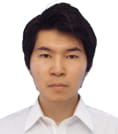
Researcher
Communication Science Laboratories
NTT
Outline
In conventional Monte Carlo sampling, even if the calculation is performed in parallel, the information about the positions of samples is not used explicitly with each other to update the samples. This often led to the inefficient exploration of the phase space. To solve this problem, we will develop a new Monte Carlo method that enables efficient exploration of the phase space by introducing the interaction term between the samples when calculating the proposal distribution for the sample updates.
Daiki Matsunaga
Development of cellular force measurement platform based on machine learning
Grant No.:JPMJAX190S
Researcher
Daiki Matsunaga

Associate Professor
Graduate School of Engineering Science
Osaka University
Outline
It is known that cells sense the surrounding mechanical environment and change their behaviour (proliferation, differentiation, apoptosis etc). Mechanobiology, which is the research field that reveals the relations between cells and their mechanics, is attracting attention in recent years. In this research, we aim to construct a system that can measure the cellular contractile force from microscopic images by using machine learning. We will build a measurement platform that enables high-speed measurement of cell contractile force. We hope our system will support future researches in mechanobiology field.
Shoko Miyauchi
Denoising & Mesher DNN construction for high-precision 3D object recognition
Grant No.:JPMJAX190T
Researcher
Shoko Miyauchi
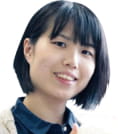
Assistant Professor
Graduate School of Information Science and Electrical Engineering
Kyushu University
Outline
All training data for Deep Neural Network (DNN) need to be represented by a fixed size vector. However, point clouds of target objects obtained from 3D sensors often include noises and lacking parts. Moreover, the number of points is different in each object. Because of these problems, DNN cannot deal such point clouds directly. Therefore, the applicant proposes Denoising & Mesher DNN (DMDNN) which represents the points clouds by mesh models suitable for DNN. By using DMDNN, high-quality training data of 3D objects can be obtained easily, which improves the accuracy of 3D object recognition by DNN.
Koko Muroya
A proof assistant for contextual equivalences, using hierarchical graph rewriting
Grant No.:JPMJAX190U
Researcher
Koko Muroya

Assistant Professor
Research Institute for Mathematical Sciences
Kyoto University
Outline
In programming, it is common practice to replace one fragment of a program with another while keeping the overall result of the program. The notion of contextual equivalence formalises safety of the replacement, that is, the same behaviour of two program fragments.
This research aims at a general framework with which contextual equivalences can be proved in the presence of various features of programming languages. Such a framework enables us to analyse robustness of contextual equivalences relative to language features, which is important in practice yet challenging in theory.
The generality is achieved by employing a rewriting system that works on hierarchical graphs. Our goal is to develop the general proof framework, as well as to seek its partial automation.













